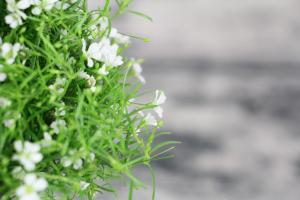How Many Feet Between Tomato Plants
Tomatoes are delicious fruits that can be grown in a vegetable garden or even in a container on a balcony. However, it is important to properly space the plants to ensure they have enough room to grow and produce a bountiful harvest. In this article, we will explore how many feet between tomato plants is ideal for optimal growth and yield.
The Importance of Proper Spacing
One of the main reasons for proper spacing between tomato plants is to ensure they receive enough sunlight and nutrients. When plants are too close together, they can compete for these resources, which can result in stunted growth, reduced yield, and even disease. Additionally, proper spacing allows for better air circulation, which can prevent fungal diseases from developing.
Determining the Ideal Spacing
The ideal spacing for tomato plants can vary depending on the variety and the growing conditions. Generally, determinate tomatoes (bush varieties) require less space than indeterminate tomatoes (vining varieties). Additionally, if you are growing tomatoes in containers, you will need to adjust the spacing accordingly.
As a general rule of thumb, tomato plants should be spaced about 2-3 feet apart. This will give them enough room to grow and develop large canopies without being too cramped. If you are growing indeterminate tomatoes, you may need to space them even further apart, up to 4-5 feet, to accommodate their sprawling growth habits.
Other Considerations
Spacing is just one factor to consider when growing healthy and productive tomato plants. Here are a few other things to keep in mind:
Soil Quality:
Tomatoes thrive in fertile, well-draining soil. Before planting, amend the soil with compost or other organic matter to provide the plants with the nutrients they need to thrive.
Watering:
Tomatoes need consistent watering to prevent drying out or becoming waterlogged. Water deeply and regularly, but be careful not to overwater, as this can lead to root rot and other problems.
Support:
Indeterminate tomatoes require staking or other support to keep them upright as they grow. Be sure to provide a sturdy support system early in the growing season to avoid damaging the plant later on.
Harvesting:
Tomatoes should be picked when they are fully ripe for optimal flavor and nutrition. To prevent damage to the plant, use a gentle touch when harvesting, and avoid picking when the plant is wet or the fruit is excessively ripe.
Conclusion
Proper spacing is essential for growing healthy and productive tomato plants. By giving your plants enough room to grow and develop, you'll be rewarded with a bountiful harvest of juicy and flavorful tomatoes. Remember to also consider other factors like soil quality, watering, support, and harvesting to ensure success in your tomato-growing endeavors.

 how many times do yo...
how many times do yo... how many planted tre...
how many planted tre... how many pine trees ...
how many pine trees ... how many pecan trees...
how many pecan trees... how many plants comp...
how many plants comp... how many plants can ...
how many plants can ... how many plants and ...
how many plants and ... how many pepper plan...
how many pepper plan...































